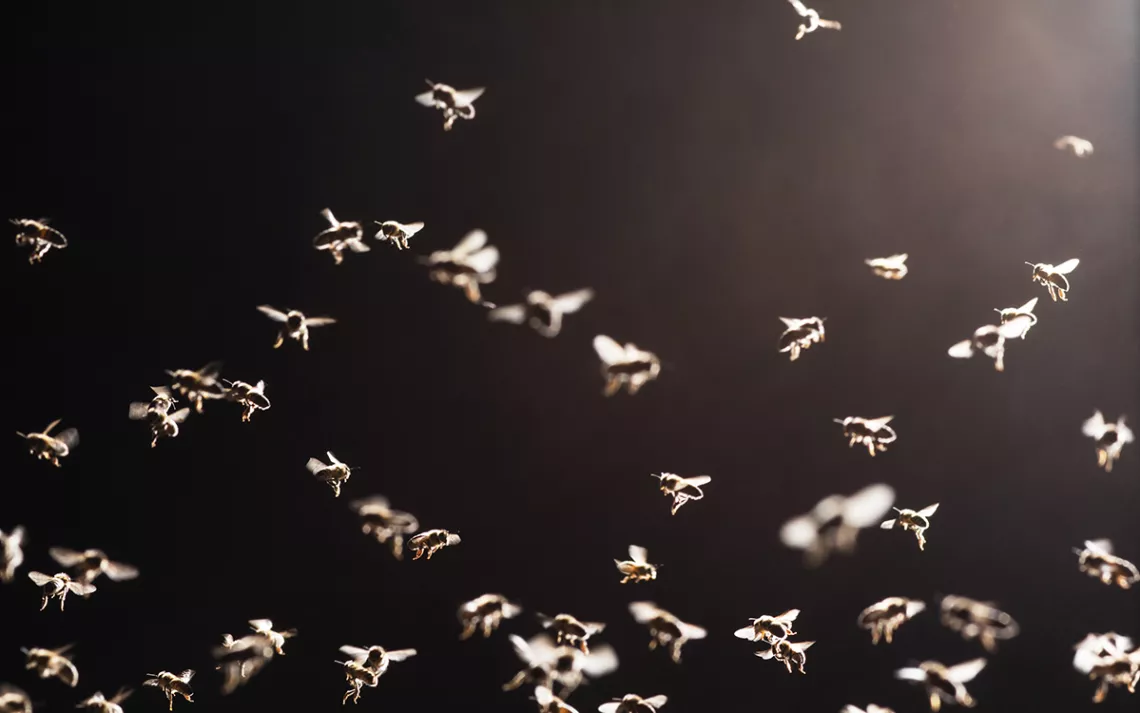Trump’s Interior Department Reverses Ban of Pesticides in Wildlife Refuges
Neonics pose a significant threat to bees and biodiversity

Photo by fantom_rd/iStock
Last week, the U.S. Fish and Wildlife Service revoked a 2014 ban on the use of neonicotinoid pesticides, commonly called neonics, in national wildlife refuges. This decision flies in the face of recent research that has linked this particular class of pesticides to harmful effects on bees and other pollinators and, according to environmental watchdogs, contradicts the very purpose of the national wildlife system.
“This continues a theme in our current administration for building up our public lands for private interest,” said Hannah Connor, a senior attorney at the Center for Biological Diversity. “There’s no way that the withdrawal of this policy was done for wildlife and wildlife conservation, which is the purpose of the wildlife system. It was done for private operators on public lands.”
Earlier this year, Connor authored an analysis of agricultural practices and pesticide use throughout the U.S. wildlife refuge system. Farming practices do not occur in all wildlife refuges, but through a cooperative farming program, farmers and ranchers can apply to run cattle or grow crops within a refuge as long as their practices abide by the mission and purpose of that particular refuge.
While many of these farmers practice regenerative or organic agriculture that may come with habitat restoration and conservation benefits, other growers still practice the kind of industrial agriculture that puts profit-maximization above sustaining natural systems. Connor’s report found that farmers and ranchers operating in wildlife refuges sprayed over half a million pounds of highly toxic pesticides, including neonicotinoids, in 2014 alone.
Just last month, the California Department of Pesticide Regulation released a study on neonics demonstrating that as far as killing insects goes, neonics do too good of a job. Farmers use neonics to target pests, but these chemicals also adversely affect honeybees, native bumblebees, and other pollinators that feed on nectar with neonic residue. Neonics then affect the central nervous system in bees, causing a wasting disease that ends in death. This study follows a trail of research making this connection. Last year, a report published by the European Food Safety Authority confirmed years of research that led the European Union to ban certain neonics from outdoor use in 2013.
Setting aside this particular harm to bees, Connor and her team at the Center for Biological Diversity noticed rampant pesticide use adjacent to critically endangered wildlife populations, particularly the Alabama cavefish, gray bats, and a host of cranes and waterfowl within the Wheeler National Wildlife Refuge complex in Alabama.
In 2014, the Obama-administration FWS decided to follow the best available science. Some states did as well. In the memorandum announcing the 2014 ban on neonics in wildlife refuges, James Kurth, chief of the National Wildlife Refuge System, wrote that neonic-treated seeds can affect “non-target” species and would therefore be phased out of use in wildlife refuges.
The ban went into full effect in 2016, at which point Connor saw numbers drop in pesticide use in Wheeler and throughout the refuge system nationwide. “Since that 2014 policy went into effect, what we’ve seen is more and more science come out to support that policy [as] the right choice, to support that neonics are a huge problem and that this current model of farming that uses monocultures and treats crops with dozens of pesticides at one time is causing devastating environmental harm."
The current administration disagrees.
In a memo released on August 2, FWS deputy director Greg Sheehan wrote that there are situations in which genetically modified crop seeds and the use of neonics may be “essential to best fulfill the purposes of the refuge and the needs of birds and other wildlife.” Sheehan deemed neonics a necessary tool to build habitat for some fish and waterfowl, apparently as a strategy for boosting populations of some game species. Increasing trophy hunting on federal lands is a top priority for Interior Secretary Ryan Zinke.
But environmental groups point out that wildlife refuges are supposed to protect all species, not just game species prized by hunters and anglers. Sheehan’s memo lacks any commitment to biodiversity, unlike Kurth’s 2014 objective to better “restore or mimic natural ecosystem processes of functions to meet wildlife and carbon objectives.”
“These are crucial wildlife sanctuaries not to be sold to pad the bottom line of pesticide companies,” George Kimbrell, legal director for the Center for Food Safety, said in a statement. In the past decade, the Center for Food Safety has filed five lawsuits against the use of GMOs and neonics in national wildlife refuges. On August 8, the Center for Biological Diversity and the Center for Food Safety filed a notice of intent to sue the Trump administration over the policy reversal.
 The Magazine of The Sierra Club
The Magazine of The Sierra Club



